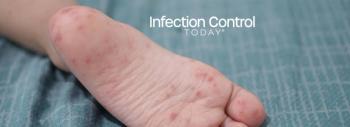
Improper Use of Gloves, Frequent Room Entry or Exit Contribute to Poor Hand Hygiene Compliance
Cocconi et al. (2013) report that although the World Health Organization (WHO) project Clean care is safer care was introduced many years ago in their hospital, hand hygiene (HH) practice shows low compliance level in some wards at increased risk of healthcare-associated infections (HAI). The researchers sought to determine the causes of HH non-compliance and to identify targeted solutions for improvement.
The project was carried out with the collaboration of Joint Commission Center for Transforming Healthcare, using TST© methodology, from April to September 2012. The researchers chose to implement the project in a pilot ward, an internal medicine ward.
They selected two groups of observers. The first ones, the secret observers, had the mandate to see whether the individual washed his or her hands upon entering and exiting the room. The second group had trained to be just-in-time (JIT) coaches. The JIT coaches approached healthcare workers who are found to not be washing hands appropriately and query them as to the reasons for their non-compliance (non observable contributing factors).
After three weeks of data collection experience, with secret observers, the baseline HH compliance in the pilot unit was an average of 26.7 percent. Entering room was worse than exit room, 22.4 percent versus 31,7 percent.
Non-compliance contributing factors were: improper use of gloves (57.3 percent), frequentl entry or exit of the room (15.5 percent), hands full of supplies (7.8 percent), follow person in exit or entry room (6.8 percent) and equipment shared (5.8 percent). Non-observable contributing factors coming from JIT coaches were: perception that HH is not necessary (50.0 percent), distracted (41.7 percent) and skin irritation (8.3 percent).
After one month of targeted solution implemented such as relocation of glove dispensers in the ward, standardize work processes, use a code word for distracted people, etc. HH compliance rose to an average of 65 percent with a gain of 34.7 percent.
Reference: Cocconi R, Arnoldo L, et al. Poster presentation P128 at the 2nd International Conference on Prevention and Infection Control (ICPIC 2013): Improving hand hygiene compliance in a teaching hospital. Antimicrobial Resistance and Infection Control 2013, 2(Suppl 1):P128 doi:10.1186/2047-2994-2-S1-P128
Newsletter
Stay prepared and protected with Infection Control Today's newsletter, delivering essential updates, best practices, and expert insights for infection preventionists.






